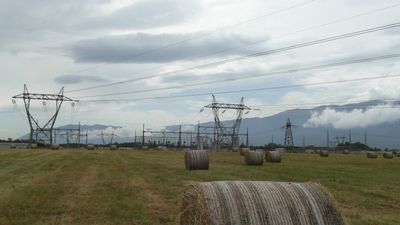Cern: Knowledge CountrysideNatascha Kellner and Jeanne-Marie Léchot
At the west side of Lac Léman, only a few minutes from Geneva Airport and city-center one finds a highly surprising urban situation—the agricultural periphery of west Geneva discreetly hosts one of the largest scientific research centers in the world. Cern, the European Organisation for Nuclear Research, was established in 1954, at the northwest of Geneva on the Franco-Swiss border. It operates the largest particle physics laboratory in the world, with the participation of 22 member states and with approximately 16’500 employees. Cern can be understood as the key testimony to the unexpected culture of innovation in this region. At 175 metre below ground level lays the Large Hadron Collider(LHC)—the most complex experimental facility ever built, and the largest single machine in the world. It was built between 1998 and 2008 in collaboration with over 10,000 scientists and engineers from over 100 countries, as well as hundreds of universities and laboratories. It lies in a tunnel of 27 kilometres in circumference, crossing the national borders of France and Switzerland, creating a giant underground footprint that frames the agricultural land above.
Being the largest employer of global scientific talent, Cern brings to the area a specific demography of highly skilled scientists. In parallel, Cern has also attracted into the area scientific research in related disciplines, as digital technologies, medical research, genetics, pharmaceutics etc. As a result, the entire Lac Léman region stands-out as a landscape of knowledge and a global center of scientific activity, comparable to the Silicon Valley.
The countryside-like quality of the area does serve as the attraction for the international scientific elites. The landscape surrounding of Cern can be described in terms of rural or post-rural imaginary of living and leisure in the countryside: one encounters horse ranges, bio-farms, fruit markets, golf-courses, cycling paths in the fields and so on.
Of course, this tendency also generates conflicts as the pressure to construct new housing continues to increase. At the same time, the growing need for low-income housing contributes to the pressure: lower-skilled workers are generally priced out from the expensive Swiss side. As a result, real-estate construction activity is mainly manifested in the French territory, generating peculiar patterns on the agricultural land.
